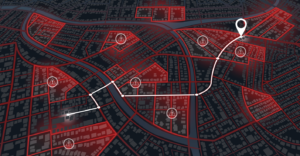
The Hidden Costs of Low Budget Lawful Interception
The limited scope and rigid architectures of some lawful intelligence platforms can lead to expensive change orders. SS8 is built to scale on demand while minimizing cost and operational impact.
Digital society provides a multitude of data-driven clues for analysts across law enforcement and the intelligence community. Intercepted communications content (CC) and metadata are routinely augmented
With 5G deployments ongoing and 6G some years away, 3GPP Release 18 provides an evolutionary step forward with the first 5G Advanced (5.5G) standard, enhancing performance, efficiency, and flexibility.
Controlling borders is vital to every country’s national interest, from managing immigration to preventing drug smuggling, human trafficking, and terrorism - but physical barriers are no longer enough.
In the coming years, AI is expected to dramatically accelerate the evolution of lawful intelligence, giving law enforcement agencies the ability to efficiently draw insight from data at unprecedented scale.
Quantum Computing may enable communications that do not travel across a network in the conventional sense and endanger traditional encryption methods, carrying critical implications for lawful intelligence.

The limited scope and rigid architectures of some lawful intelligence platforms can lead to expensive change orders. SS8 is built to scale on demand while minimizing cost and operational impact.

As 5G and 5G NR gain ground, more organizations are leveraging private mobile networks. Ensuring lawful intercept and other technologies can integrate and operate at such scale can unlock value.

SS8’s iDossier provides a repository for multidimensional profiles of criminal individuals and organizations, with the ability to map, visualize, and draw insights from the relationships between them.

Factors that range from migration surges to political polarization contribute to geopolitical instability that may lead to sustained outbreaks of violence and mayhem.

Threat assessments find that state actors continue to influence US elections. The advance of generative AI since the 2022 midterm election means these activities could be more sophisticated in 2024.

The ecosystem involved in collecting, buying, and selling Mobile Advertising data provides a rich source of investigative data for law enforcement agencies (LEAs).

Preventing terrorism and mass casualties in the absence of full data visibility requires identifying and combining digital breadcrumbs that reveal clues and generate evidence.

The widespread presence of unauthorized mobile phones in correctional facilities continues to be a significant enforcement challenge.

The shifting landscape of communication complicates lawful intelligence with unprecedented volumes of digital traffic, obscured by encryption, across social media and other channels.

Reducing spend on lawful intelligence technologies is a strategic necessity for both law enforcement agencies and communication service providers all over the world.
THE DATA SILO DILEMMA FOR LAW ENFORCEMENT
How to Ingest, Filter and Query 5G Volumes
Webinar Presented by Kevin McTiernan